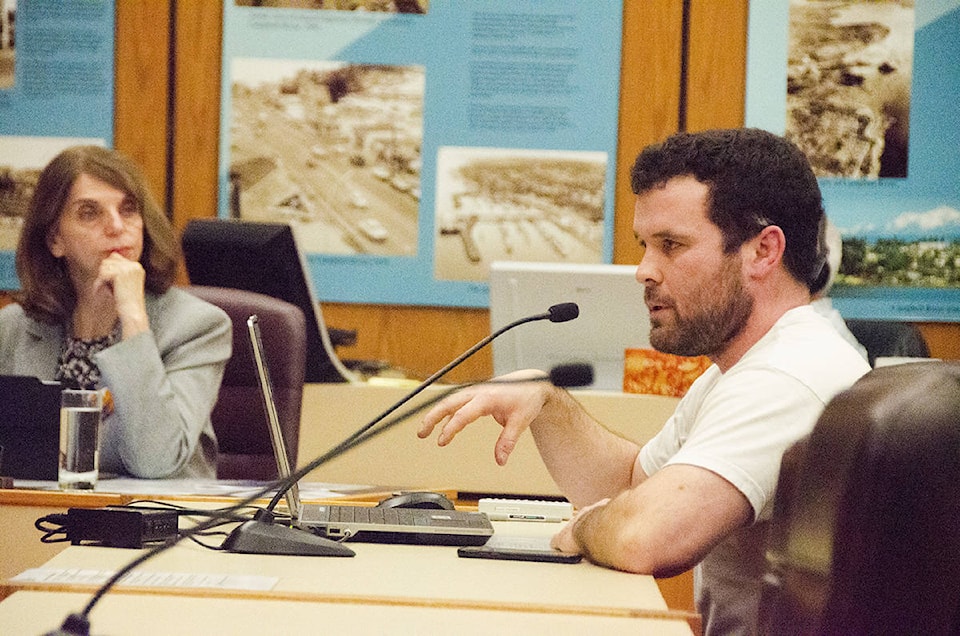Some residents in the Quinsam Heights area of Campbell River say the city’s rezoning proposal for the area doesn’t make sense and will drastically reduce their property values should it go through.
Paul Murphy, who presented to council Monday on behalf of the concerned residents, says the city’s proposed move to RE-2 zoning designation for areas of Quinsam Heights from RM-1 will make it so that only property owners with a lot under one-acre in size will be able to subdivide their property, negatively impacting property values of lots one acre or larger.
“We’re asking that the SOCP (Strategic Official Community Plan) be reopened and the minimum lot size of one-acre for our neighbourhood be changed, that flexible zoning be allowed and plans be put in place that reflect the reality of the neighbourhood,” Murphy said.
“Our concern is that the lot sizes and layout (in the neighbourhood) are not at all conducive to the proposed rezoning,” Murphy said, showing council a series of photographs of townhouses, single family homes on smaller lots, patio homes and other areas of the neighbourhood, questioning how anyone could consider this a “rural area” or want to make it so.
“This is a basic, residential neighbourhood,” Murphy said. “It doesn’t make sense to call this rural.”
City of Campbell River Sustainability and Long Term Planning Manager Amber Zirnhelt says Murphy’s concerns are excellent to hear, because they are still early in the process of figuring out what zoning will work best to bring the area into compliance with the SOCP.
But what the city heard from residents of the area during consultations on the SOCP back in 2016, Zirnhelt says, “was that they want to see some growth and infill in that area, but they also want to maintain the distinct, semi-rural character of the area, because that’s quite unique to that area within Campbell River.”
So the city’s challenge now is to reconcile those views. How can they keep the semi-rural feel but still allow people to subdivide and increase the density?
That’s where breaking the area up into smaller sections comes into play – at least as the proposal currently sits.
“Along Willis, for example,” Zirnhelt says, “we would see more infill and multi-family developments, and in other areas where there are the larger lots, the estate designation would be in place so large lots would not be able to be subdivided, but we’re still engaged in the consultation process and there’s still time for further review.”
Coun. Ron Kerr asked Murphy if many of the residents attended the meetings held by the city when the proposal was initially brought forward so they could express their concerns at that time.
“I attended,” Murphy says. “And I assumed, based on the lack of resistance, that everyone was okay with it.”
The reality, however, is that people didn’t attend because they didn’t know the meetings were happening, Murphy said, and if they did, they didn’t know how it would affect them.
“When I started going door-to-door, I was met with genuine distress and panic,” Murphy said. “People didn’t know what was happening until it was too late.”
“We certainly appreciate your comments and concerns,” Mayor Andy Adams said after thanking Murphy for his “extremely professional“ presentation. “There’s no question that under the current SOCP, if the zoning follows suit, there will be a lot of properties in that area that will be non-conforming to the SOCP, so it’s definitely something we will be taking a look at.”
Zirnhelt says there is currently no timeline on any concrete decisions in terms of rezoning the area to bring it in line with the SOCP, “because we’re still seeking public consultation over the next few months to have more neighbourhood dialogue before any decisions are made.”
